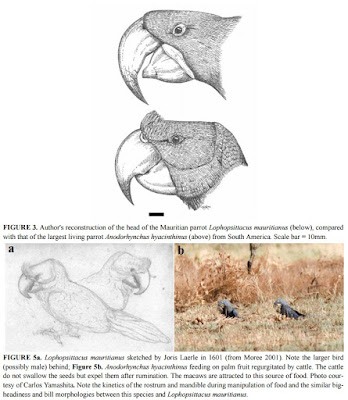Abstract
The parrots (Psittacidae: Lophopsittacus, Psittacula, Necropsittacus, Mascarinus) of the Mascarenes (Mauritius, Réunion, Rodrigues) have been relatively poorly studied. Most analyses have been based on a few skins, insufficient fossil material, and unreliable contemporary accounts and illustrations, which have led to erroneous interpretations. The discovery of new fossil remains of parrots and new interpretations of contemporary descriptions and illustrations has clarified many issues. One problematic species, Lophopsittacus bensoni is here removed to the genus Psittacula. A detailed comparative analysis of fossil skeletal elements indicates that the affinities of the Mascarene parrots lie within the Psittaculini, a wide ranging tribe of parrots that occurs mainly in Southeast Asia and Australasia. The Mascarenes are remote volcanic islands and biogeographical evidence presented here suggests that parrots reached this isolated group by island-hopping from India, probably during low sea level stands.
Key words: Mascarene parrots, extinction , affinities, morphology, ecology, biogeography, Psittaculini, Psittacula bensoni new comb.
Julian Hume. 2007. Reappraisal of the Parrots (Aves: Psittacidae) from the Mascarene Islands, with Comments on Their Ecology, Morphology, and Affinities. Zootaxa. 1513; 1-76.
